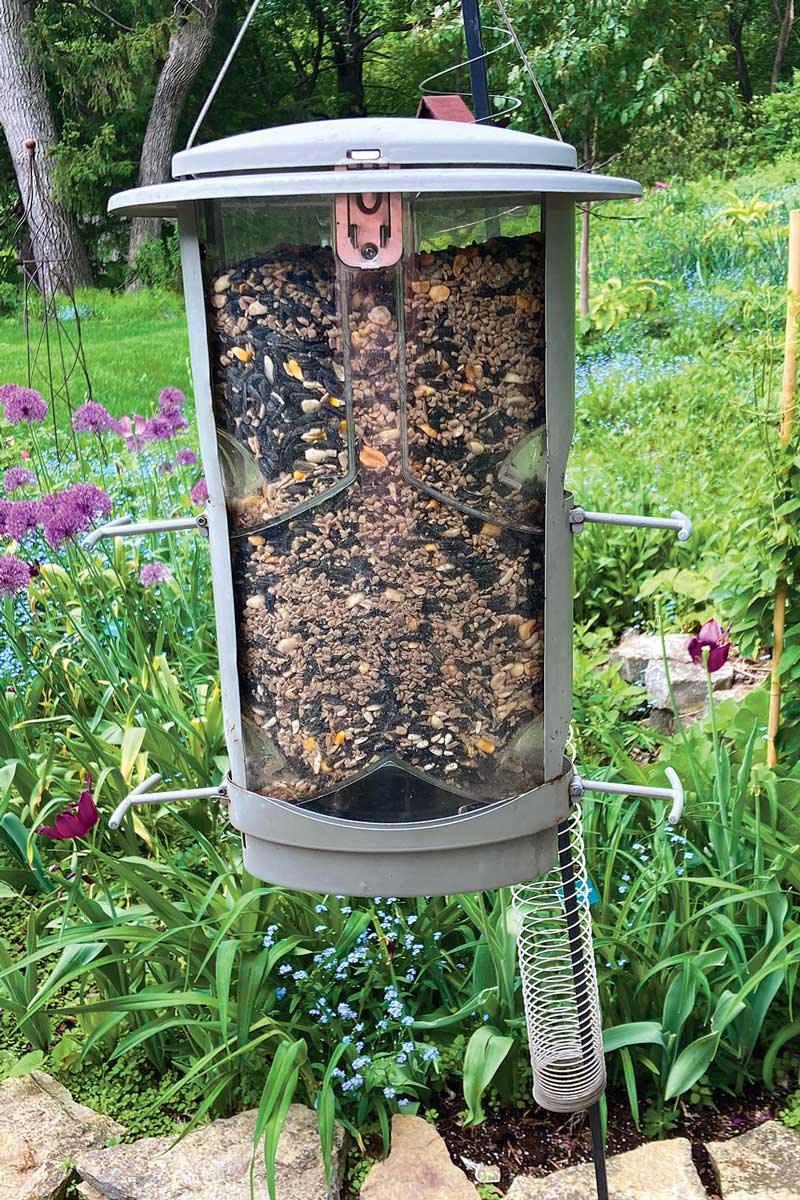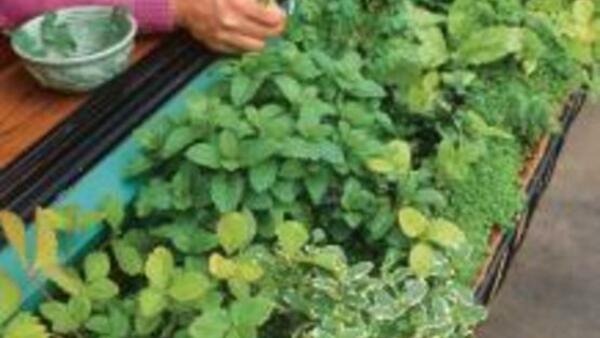
Winning Tip: Protect those sprouts
I was searching for a way to help protect young sprouts and encourage their growth. I had used plastic container collars before, but birds and squirrels were not deterred, and the containers were blown by the wind. Then I cut a crown in a large plastic soup container and covered the lip with a thick circle of mulch to help keep the container in place and reduce water evaporation. The spikes in the “crown” deterred birds, squirrels, and slugs, and it also produced a quasi–greenhouse effect.
—Adrienne Leder, Berkeley, California
Good for kneeling as well as sleeping
Tony Fulmer’s tip about old chair cushions in garbage bags as knee protection is a good idea. For that same purpose, I use closed-cell foam pads made to go under sleeping bags. I fold over one of these 6-foot-long pads to create two layers when I’m working on hard ground; if I’m on an even harder surface such as concrete, I fold it again to make four layers. And if visiting grandkids need the pads for their original purpose, a quick hosing off restores them.
—Davis Steelquist, Sequim, Washington
For birds only
My home abuts a 15-acre nature preserve. Hence, a lot of deer like to visit my yard, garden, and bird feeders. One bird feeder, which hangs from a shepherd’s hook, is very enticing, and the deer were devouring the feed every night.
To keep the deer away, I took an unused plastic wastebasket with handle grips and attached a wire. This allows me to cover the feeder each evening, which is when the deer do the most damage. In addition, I drilled several small holes in the bottom to allow rainwater to drain out. Not only has the nighttime grazing ended, but there is a lot less browsing in my extensive flower garden. And I’m spending a lot less money on bird feed. I also added a Slinky to the shepherd’s hook to discourage squirrels and chipmunks from climbing up.
—Tom Charbonneau, Arden Hills, Minnesota
No more gnats
Frustrated by buzzing gnats, I used a safety pin to attach a laundry dryer sheet inside my garden hat. The smell repelled the gnats that often swarm around my yard. Gardening is more pleasant without those annoying insects buzzing around my eyes and ears.
—Mary Crum, Holland, Pennsylvania
When did I last water that plant?
To help me keep track of when I need to water my numerous houseplants, I use a dry erase board. I list each plant and record when I last watered each one. The board is easy to update, and now I can tell at a glance when I need to water my plants.
—Victoria Kojcsich, Winston-Salem, North Carolina

Bulbs for empty spaces
Each year when my spring bulbs bloom, I always see some empty spots that I would like to fill for the next spring. In autumn after visiting the garden center, I pot up my new bulb purchases and sink the pots into my compost heap. In spring after the new bulbs have emerged, I arrange the pots in my garden just where I would like, and then I remove the bulbs and plant them.
—Marsha Lomis, Kleinburg, Ontario
A window box for all seasons
Here is a way to have plants in your window boxes in all four seasons of the year: Just get window box inserts for the spring bulbs. I planted grape hyacinth bulbs in one set of inserts, then removed them in May and put in another set of inserts, in which I planted coleus, impatiens, and creeping Jenny. For the remaining seasons I use the same set of inserts, but I remove the summer annuals and stick in sprigs of ornamental grasses for fall and evergreen branches for winter. Over winter I store the spring inserts outside, without disturbing the bulbs, until the next spring.
—Gwen Kannapel, Wallingford, Pennsylvania





















Comments
Log in or create an account to post a comment.
Sign up Log in